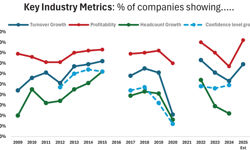The growth of cross border retail and subscription sales has opened up a potentially significant new and exciting marketplace for the sale of magazines and publications. The expanded EU, extended supply chains and the increased commerciality of postal carriers allow access to these new markets, but often the tax considerations, and particularly the indirect tax implications, are not considered fully.
Although we live in a single European Community, the different VAT rates in the various member states inevitably creates a distortion of competition across the territories.
International VAT Rates
The table shows a selected snapshot of the VAT rates applicable on the domestic sale of magazines and periodicals in a number of different member states.
| EU Member State | VAT Rate on magazines |
| Austria | 10% |
| Belgium | 6% |
| Denmark | 25% |
| France | 2.1% |
| Germany | 7% |
| Hungary | 5% |
| Ireland | 13.5% |
| The Netherlands | 0% |
| Portugal | 5% |
| Slovakia | 19% |
| United Kingdom | 0% |
| Source: KPMG LLP (UK) | |
So, the same item can attract a VAT rate of anywhere between 0-25% depending on which territory it is sold in, which is a highly significant difference. The distortion of competition is further exaggerated by the fact that online magazines and publications are invariably taxed at the standard VAT rate whereas many member states have a reduced VAT rate for their physical counterparts.
With the market open to such variances, it is inevitable that some suppliers have been considering ways in which they can supply publications and magazines into the positive VAT rate territories in a tax efficient manner, particularly where they may be looking to break into new sales territories…
One such tax structure involves selling magazines and publications to customers in the EU without having to account for VAT on the cover price, where the magazine is imported into the EU under applicable legislation from territories such as the Channel Islands or Switzerland. The ability to do this relies on EU Customs and VAT legislation which allows low value shipments to be imported free of VAT and duty. Of course, this relief would not be attractive for imports into the UK, as the UK has a zero VAT rate on sales of magazines and publications.
The Danish Problem
We have all seen that famous beer advertising slogan telling us that "the Danes hate to see it leave." Well in the case of magazines and periodicals, it would be more accurate to say that that the Danes hate to see it leave – and then come back again! Let me explain.
Last year, Denmark applied for a derogation from European legislation to counter what they perceived to be unacceptable tax avoidance, which allowed magazines and publications to be imported into Denmark on behalf of customers without any VAT being payable. The VAT rate for magazines and periodicals in Denmark is currently 25%, so representing a significant proportion of the cover price.
If any of you have been on holiday to Scandinavia, you may have noticed the Aland Islands which are positioned between eastern Sweden and southwestern Finland, around 65 miles east of Stockholm. The islands, actually made up of over 6,500 islands and rocky outcrops, are technically outside the customs territory of the EU, and therefore any products brought into the EU from the Islands must normally be formally imported and this presented the ability for suppliers to claim the VAT exemption for low value imports.
In the first nine months of 2003, the Danish authorities calculated that around 3.5 million magazines and publications were imported into Denmark from the Aland Islands, which in itself created a VAT loss of around EUR 6.2 million (Source: Danish Derogation Proposal to the EU Commission). The reality of the situation was that many of these publications were put on trucks in the EU, sent on a pleasant but somewhat unnecessary journey to the Aland Islands and then turned round to be brought back to Danish customers after the import relief had been claimed.
Rather than block the relief completely, the Danish authorities sought and obtained a specific derogation that allowed them to prevent the relief being claimed on imports of magazines and periodicals where they had been originally printed in the EU. Although I suspect that this reduced the ferry traffic to the Aland Islands, it will have had the desired effect and this avoidance will have ceased.
Using Low Value Exemption
The European Customs and VAT legislation discussed above allows low value shipments to be imported without VAT and Customs duty being payable (in the case of Denmark the low value threshold for VAT purposes is around EUR 10). In other EU territories, the threshold for the relief can be as high as EUR 22 (it is actually £18 for the UK).
The legislation was originally introduced to assist the Customs authorities in the various member states, as the cost of collecting the VAT on low value imports was not considered to be an economic activity. The European legislation does actually allows member states to specifically exclude mail order transactions from being able to benefit from the relief, but many member states have not taken up this option. Although the Danes could have invoked this part of the law, they chose a much more targeted approach to counter the Aland Islands problem.
Magazines and periodicals are, of course, potentially well suited to claiming the low value relief as they are light, easy to transport and ideal for home delivery. If the relief could be claimed legitimately on the import of magazines and periodicals into high VAT rate member states, then we could see a repetition of the Danish Aland Islands problem.
One of the fundamental rights of an EU taxpayer is to be able to structure his affairs in an efficient manner, but only as long as he is not abusing the tax system. There has been increasing case law in various member states around what would constitute "abuse" and this remains a delicate subject for both taxpayers and tax authorities alike. If a structure has no other economic substance other than to reduce tax, then it may well find itself open to attack, however a genuine European distribution business that has its fulfilment operation based in Switzerland to service a range of adjoining markets may be able to legitimately argue that its customers can claim the low value relief as a consequence of its wider business strategy.
The low value relief has been in the news in the UK in recent months, with businesses selling CDs and DVDs from the Channel Islands to the UK which potentially creates a distortion of competition with UK suppliers. Although Her Majesty’s Revenue and Customs have shown an interest in what they may feel is a loss of tax revenues, they have not yet taken actions to prevent the relief being claimed in the UK in the same way as the action taken by the Danish authorities, although this remains a possibility.
Fulfilling from within the EU
You may, of course, decide that fulfilling from outside the EU is not a viable option for your business, but would still like to sell directly to readers in other member states where they may have a high VAT rate on magazines and periodicals. Unfortunately, the European VAT system is geared to protect the revenues of the member states and mechanisms are in place to ensure that each member state gets its fair share. In simple terms, if a supplier sells products to private customers in another member state then, once the value of sales exceed specific limits, the supplier is obliged to register for VAT in that territory and account for VAT at the appropriate rate. Therefore, those suppliers based in the UK who think they can sell magazines cross border and continue to apply the UK zero rate will be disappointed.
The threshold for having to register varies between member states. It is currently around £70,000 in the UK but can be lower in other territories. A UK supplier would be able to apply the zero rate on sales up to the threshold in the destination country, but then would be required to register and account for VAT in the member state of the customer. Suppliers in other member states could be looking greedily at the UK market with one eye on making extra profits. If they can retain their cover price and control distribution costs, then they could look to take advantage of the UK zero rate for magazines and periodicals.
For example, a UK supplier wishing to sell magazines directly to readers in Germany from another EU member state would be able to apply the zero VAT rate until the values reached EUR 100,000 in a year, however after that threshold has been exceeded he would be required to register for VAT in Germany and account for further sales at the German VAT rate of 7%. On the other hand, a German supplier would have to account for 7% German VAT on sales to UK readers from another member state up a value of £70,000 in a year, after which he could legitimately register for UK VAT and charge VAT at the zero rate.
Leveling the Playing Field
Publishers and distributors with pan European markets are increasingly considering indirect tax as a driver in their decisions on strategic entry into new markets and sales territories. Whether they choose to use a non-EU fulfilment location or look to take advantage of the lower VAT rates in other territories, the options are many and varied. The Danish example clearly shows that, although tax is an important consideration, when taken to extremes it can cause problems both to local tax authorities and of course to the local market itself.
The question I am regularly asked is whether we will ever see a harmonisation of VAT rates across the 25 member states which would in part eliminate some of the arguments and issues here. The stark reality is that this is unlikely to happen imminently. Those countries with positive VAT rates will be keen to preserve their tax revenues whereas those with a zero rate, like the UK, will be conscious that adding VAT would be a politically unpopular move and they could expect a backlash from the industry. In addition to all this, all member states are constrained by the framework of the European legislation itself and no member state has complete flexibility as to the rate that it charges either on physical or digital publications.
What Next
So we are left with a distorted single market. The availability of the low value relief, as demonstrated in Denmark, adds further complications as the EU does not exist in a vacuum, free from outside sales pressures and fulfilment options.
It is clearly too simplistic to compare the various VAT rates across the EU and the potential availability of the low value relief when deciding on potential viable new sales territories. That being the case, while the distortion exists, some businesses will inevitably look to obtain a favourable outcome where possible and to use the distortions to their commercial advantage as long as this remains within the boundaries of the law. The Aland Islands episode required a change in the law to protect the Danish market and the concern is that other markets may soon find themselves under similar pressures.










